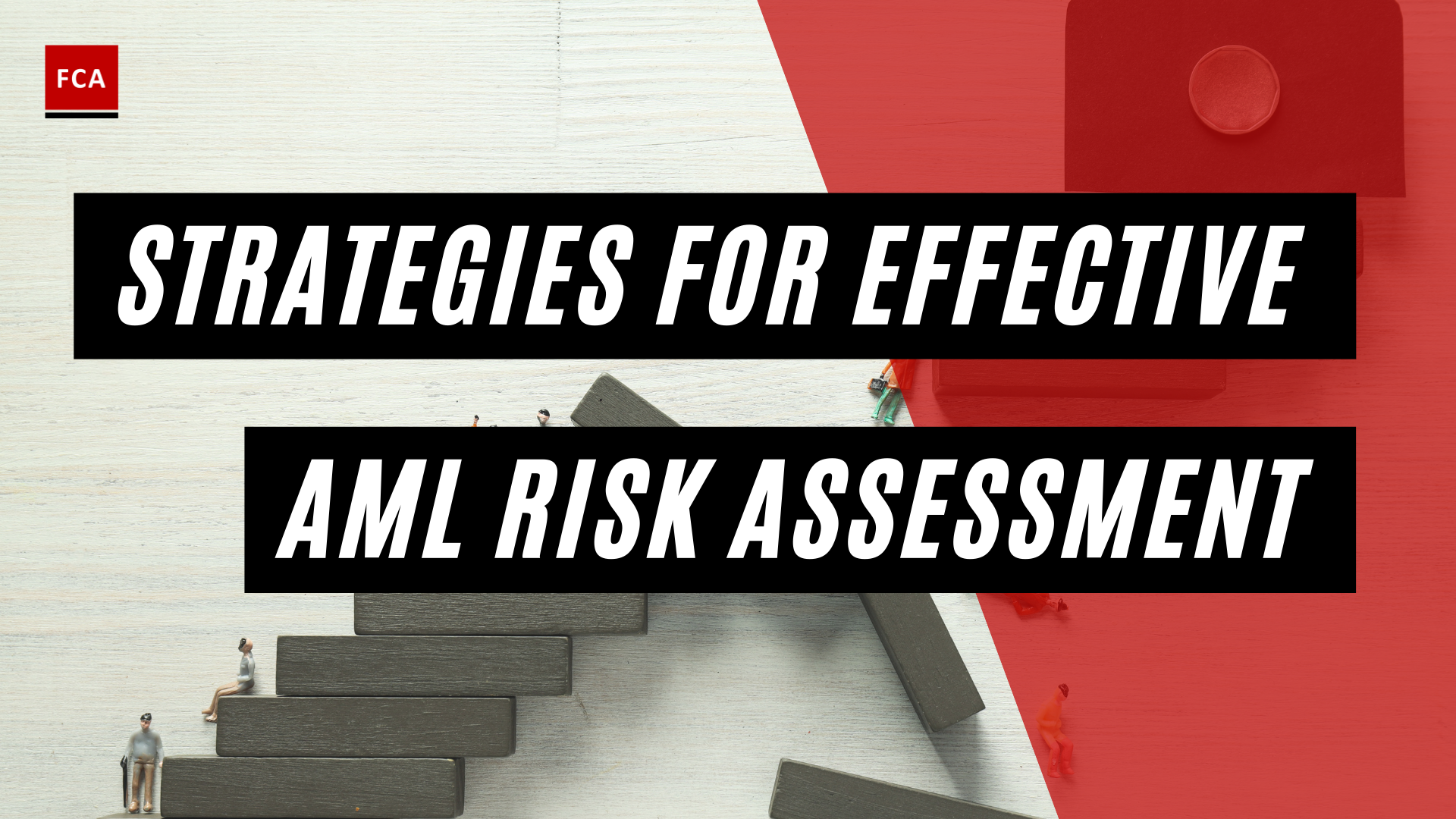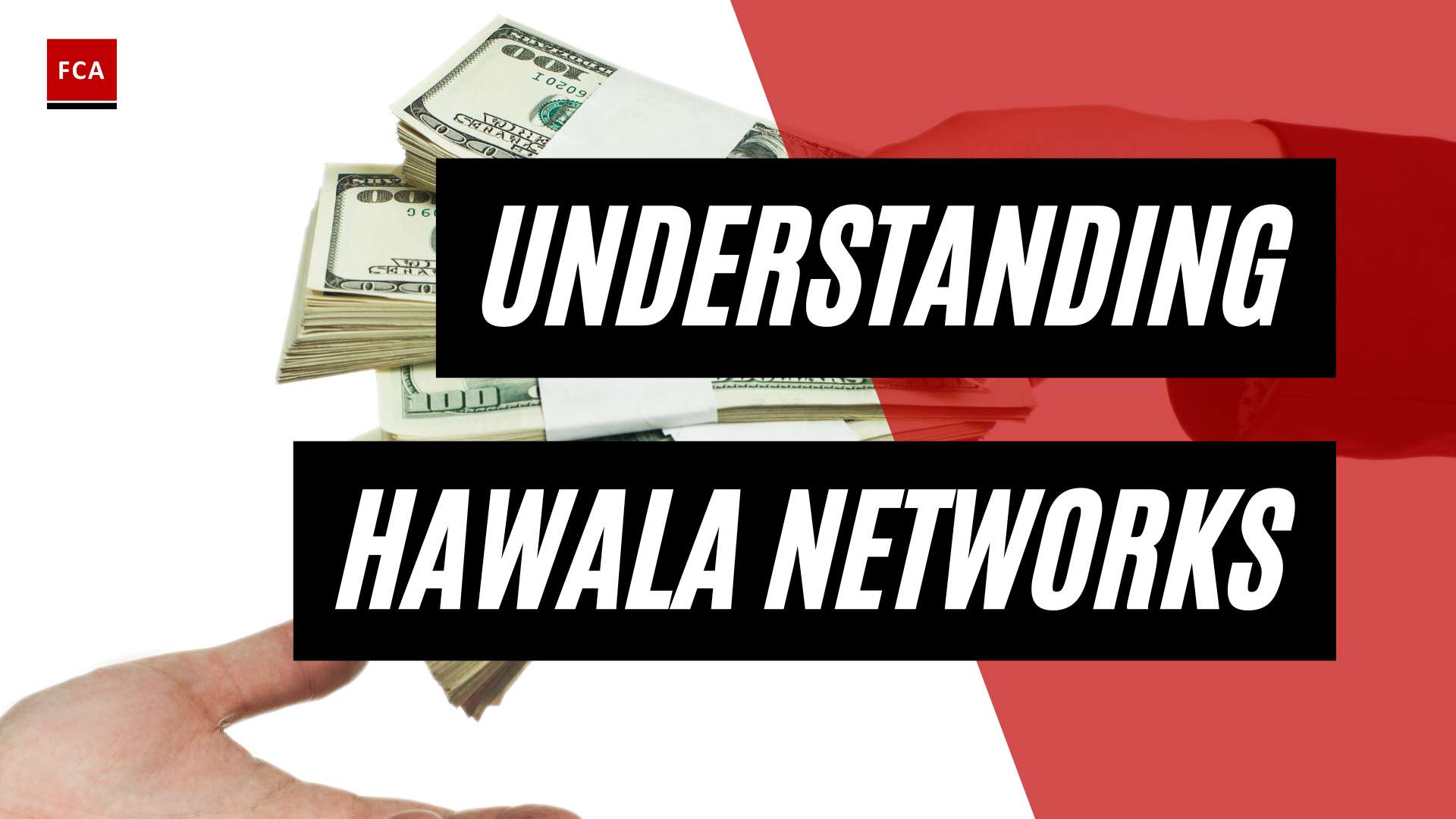Money Laundering Through Real Estate: An Overview
Money laundering through real estate is a significant concern in the realm of anti-money laundering efforts. Criminals exploit the high-value nature of real estate transactions to legitimize their illicit funds and integrate them into the formal financial system. Understanding the dynamics of money laundering in real estate is crucial for professionals working in compliance, risk management, anti-money laundering, and anti-financial crime.
Understanding Money Laundering in Real Estate
Money laundering through real estate involves various techniques that allow criminals to conceal the origins of their illicit funds and make them appear legitimate. These techniques include:
-
Purchasing Properties in Cash: Criminals frequently use cash to purchase properties, making it difficult to trace the funds back to their illegal activities. The high-value nature of real estate transactions provides an opportunity for money launderers to introduce significant amounts of illicit funds into the legitimate financial system.
-
Shell Companies and Legal Entities: Criminals often use shell companies or other legal entities to obscure ownership and control of real estate assets. By purchasing properties under the name of a shell company, money launderers can further distance themselves from the illicit funds and create complexity in the money trail.
-
Exploiting Legal Loopholes: Money launderers may take advantage of legal loopholes and gaps in regulations to transfer funds across borders, evade taxes, and disguise the true ownership of real estate assets. These tactics make it challenging for law enforcement agencies to detect and investigate money laundering activities.
For more in-depth information on these methods and techniques, refer to our article on real estate money laundering methods.
Methods and Techniques Used in Real Estate Money Laundering
To successfully launder money through real estate, criminals employ various methods and techniques. Some of the common methods include:
-
Cash Purchases and Shell Companies: Criminals use cash to purchase properties, often utilizing shell companies to obscure the true ownership and control. This allows them to introduce illicit funds into the real estate market while making it difficult for authorities to trace the source of the funds. For more details on shell companies in money laundering, visit our article on money laundering through shell companies.
-
Third-Party Purchases and Mortgage Fraud: Money launderers may employ third parties, known as straw buyers, to act as the purchasers of properties. These individuals are not the actual owners of the property but help conceal the true source of the funds used in the transaction. Mortgage fraud schemes can also be utilized to facilitate money laundering through real estate.
-
Property Price Manipulation and Rental Income: Criminals may engage in property price manipulation to inflate the value of real estate assets artificially. By selling the properties at the inflated prices, they can effectively launder money and generate clean funds. Additionally, rental income from properties can be used to legitimize illicit funds and create a facade of legitimate income.
To gain deeper insights into these techniques, refer to our article on real estate money laundering schemes.
Understanding the methods and techniques employed in money laundering through real estate is essential for developing effective anti-money laundering measures and regulatory frameworks. By addressing the vulnerabilities in the real estate sector and implementing robust compliance protocols, professionals can contribute to the prevention and detection of real estate money laundering schemes.
Red Flags and Vulnerabilities in Real Estate Transactions
When it comes to money laundering through real estate, it is crucial to be aware of the red flags and vulnerabilities that can indicate illicit activities. By understanding these warning signs, professionals in compliance, risk management, anti-money laundering, and anti-financial crime can better detect and prevent money laundering schemes.
Red Flags of Money Laundering in Real Estate
-
Use of Shell Companies: Criminals often exploit the use of shell companies to launder money through real estate. By utilizing these entities, they can obscure the true ownership of properties, creating a dead-end in the money trail. The use of shell companies is particularly prevalent in jurisdictions with strict privacy laws, making it difficult to trace the ultimate beneficial owners.
-
Cash Purchases: Cash transactions for real estate purchases can be a red flag for potential money laundering. Criminals may use large amounts of cash to acquire properties, as it helps to obfuscate the source of funds and avoid detection. Cash purchases, especially for high-value properties, warrant closer scrutiny.
-
Unusual Transaction Patterns: Real estate transactions that exhibit unusual patterns or lack a legitimate purpose should raise suspicion. These patterns may include frequent buying and selling of properties within a short period, rapid fluctuations in property values, or transactions significantly deviating from market norms. Such anomalies may indicate attempts to legitimize illicit funds.
-
Hidden Property Ownership: Concealing property ownership through the use of legal entities or hidden ownership arrangements is another red flag. Criminals may establish complex ownership structures, making it challenging to determine the true beneficiaries of the properties involved in the transactions.
-
Inconsistent Financial Information: Discrepancies or inconsistencies in financial information provided during real estate transactions can be indicative of money laundering. This may include unexplained wealth, unverified income sources, or incomplete disclosure of assets and liabilities.
Vulnerabilities in the Real Estate Sector
The real estate sector presents several vulnerabilities that can be exploited by money launderers:
-
Secrecy and Lack of Transparency: The secrecy surrounding real estate transactions makes the sector an attractive target for money laundering. Limited due diligence requirements, inconsistent regulations, and the involvement of intermediaries like real estate agents contribute to the opacity of these transactions. Criminals can exploit this lack of transparency to disguise the origins of illicit funds.
-
Cross-Border Transactions: Money laundering through real estate often involves complex international networks of criminals. Differences in legal frameworks and jurisdictions create opportunities for criminals to move funds across countries and continents, further complicating the detection and investigation of financial crimes.
-
High-Value Nature of Transactions: The high-value nature of real estate transactions makes them particularly susceptible to money laundering. Criminals seek to legitimize their illicit funds by investing in properties, especially in areas with booming real estate markets. For example, billions of dollars of funds with uncertain origins have entered markets such as Germany and the Greater Toronto area in Canada in recent years.
To address these vulnerabilities and combat money laundering in the real estate sector, regulatory efforts and anti-money laundering measures have been implemented at both international and national levels. These initiatives aim to enhance due diligence, promote information sharing, and foster cooperation among stakeholders to detect and prevent money laundering through real estate transactions.
By being aware of the red flags and vulnerabilities associated with money laundering in real estate, professionals can play a crucial role in safeguarding the integrity of the real estate sector and preventing illicit funds from entering the legitimate financial system.
For more information on real estate money laundering schemes, methods, investigations, prevention, penalties, legislation, and statistics, please visit the relevant articles on our website.
High-Profile Cases and Hotspots
Money laundering through real estate has been a prominent issue around the globe, with several notable cases highlighting the extent of this illicit activity. Additionally, certain regions have emerged as hotspots for real estate money laundering. In this section, we will explore some of these high-profile cases and global hotspots.
Notable Cases of Money Laundering Through Real Estate
-
UK Property Involvement: Transparency International reported that £1.5 billion of UK property, mostly in London, was purchased by Russians accused of corruption. Furthermore, 2,189 firms registered in the UK and its overseas territories were involved in 48 Russian money laundering and corruption cases, amounting to over £82 billion (ComplyAdvantage).
-
International Wire Transfers: In one case, a Honduran man laundered money through international wire transfers to purchase properties in New Orleans. This highlights the global nature of real estate money laundering schemes, where funds can be moved across borders to acquire properties (ComplyAdvantage).
-
Facilitating Illegal Transactions: Private banks have also faced allegations of facilitating illegal real estate transactions. For instance, there have been claims of a private bank allowing the Vatican to invest $350 million in London property, potentially exposing vulnerabilities in the real estate sector.
These cases demonstrate the complexity and magnitude of money laundering through real estate, involving various actors and jurisdictions. Law enforcement agencies and regulatory bodies continue to investigate and prosecute such cases to combat illicit financial activities.
Global Hotspots for Real Estate Money Laundering
-
London: London has been identified as a hotspot for real estate money laundering. The high-value nature of the properties, coupled with the attractiveness of the city’s real estate market, has made it an attractive destination for illicit funds. The involvement of Russian individuals and companies in purchasing UK properties has been a cause for concern (ComplyAdvantage).
-
Toronto and Vancouver: In Canada, the cities of Toronto and Vancouver have also emerged as hotspots for real estate money laundering. The influx of foreign funds, particularly from China, has raised concerns about the integrity of the real estate market in these cities. Australian Transaction Reports and Analysis Centre (AUSTRAC) estimated that Chinese interests alone laundered more than $1 billion through Australian real estate in 2020 (First AML).
-
New York: New York City is another global hotspot for real estate money laundering. Its high-value properties and status as a global financial hub make it an attractive destination for illicit funds seeking a legitimate investment vehicle. The authorities have been actively working to enhance anti-money laundering measures to mitigate the risks associated with real estate transactions (First AML).
These hotspots highlight the need for increased vigilance and robust anti-money laundering measures within the real estate sector. By identifying and addressing vulnerabilities in these regions, authorities can work towards minimizing the impact of money laundering through real estate.
As global efforts to combat real estate money laundering continue to evolve, it is essential for professionals in compliance, risk management, anti-money laundering, and anti-financial crime to stay updated on the latest developments and regulations.
Regulatory Efforts to Combat Real Estate Money Laundering
To address the growing concern of money laundering through real estate, various international and national measures have been implemented. These efforts aim to enhance transparency, strengthen regulations, and foster collaboration among stakeholders.
International Measures and Initiatives
On the international stage, several measures and initiatives have been introduced to combat real estate money laundering. The European Union, for example, has implemented enhanced due diligence requirements, improved information sharing among Member States, and the establishment of beneficial ownership registers (European Parliament). These measures aim to strengthen the regulatory framework and prevent criminals from exploiting real estate for money laundering purposes.
Another notable international effort is the US Corporate Transparency Act (CTA), which will come into effect on January 1st, 2024. The CTA requires many US companies to submit beneficial ownership information to the Financial Crimes Enforcement Network (FinCEN) to combat money laundering through shell companies (sanctions.io). By increasing transparency and accountability, this act aims to prevent criminals from using anonymous entities to launder money through real estate transactions.
National Regulations and Legislative Actions
Countries around the world have implemented national regulations and legislative actions to address real estate money laundering. In the United States, for instance, regulations like the USA PATRIOT Act, Geographic Targeting Orders (GTOs), and the Anti-Money Laundering Act of 2020 have been introduced. These regulations require increased scrutiny and reporting requirements for real estate transactions over certain thresholds, helping to detect and prevent money laundering activities in the real estate sector (traccc.gmu.edu).
Similarly, New Zealand has expanded its Anti-Money Laundering and Counter-Terrorism Financing (AML/CFT) Act to target money laundering activities in the real estate sector. Real estate agents are now required to understand how money laundering operates in real estate and be vigilant for red flags (First AML).
Australia has also taken steps to combat real estate money laundering. The Australian Transaction Reports and Analysis Centre (AUSTRAC) estimated that in 2020, Chinese interests alone laundered more than $1 billion through Australian real estate. To address this issue, the Australian government has implemented measures to increase scrutiny and reporting requirements for real estate transactions. In the 2021 fiscal year, the Australian Federal Police (AFP) seized $116 million in real estate assets out of the total $187 million seized (First AML).
These national regulations and legislative actions demonstrate the commitment of governments to combat money laundering through real estate. By strengthening regulatory frameworks, increasing transparency, and imposing stricter reporting requirements, authorities aim to deter criminals and safeguard the integrity of the real estate sector.
As the fight against real estate money laundering continues, it is important for professionals working in compliance, risk management, anti-money laundering, and anti-financial crime to stay updated on the latest regulations and initiatives. By adhering to anti-money laundering measures and actively participating in information sharing and cooperation among stakeholders, professionals can contribute to the collective effort to combat money laundering in real estate transactions.
Techniques Used in Real Estate Money Laundering
Money laundering through real estate involves various techniques and strategies that allow criminals to conceal the origins of illicit funds and integrate them into the legitimate economy. Understanding these techniques is crucial for developing effective anti-money laundering measures in the real estate sector.
Cash Purchases and Shell Companies
One common technique used in real estate money laundering is conducting cash purchases and utilizing shell companies. Criminals often purchase properties using large amounts of cash, which makes it difficult for law enforcement agencies to trace the origins of the funds. By using cash, they can avoid leaving a financial trail that could expose their illicit activities. Additionally, criminals may establish shell companies or legal entities to obscure the true ownership of the properties. These entities serve as a front, making it challenging to identify the individuals behind the transactions.
Third-Party Purchases and Mortgage Fraud
Another technique employed in real estate money laundering involves third-party purchases and mortgage fraud schemes. In this method, criminals use intermediaries, such as family members, associates, or straw buyers, to purchase properties on their behalf. By using third parties, criminals can distance themselves from the illicit funds and create a layer of anonymity. Additionally, criminals may engage in mortgage fraud, manipulating mortgage applications and documentation to secure loans based on inflated property values. This allows them to introduce illicit funds into the real estate market while appearing to be legitimate buyers.
Property Price Manipulation and Rental Income
Property price manipulation and rental income schemes are also utilized in real estate money laundering. Criminals may engage in property flipping, artificially inflating property values to generate substantial profits. By buying properties at a lower price and quickly selling them at a higher price, criminals can legitimize their illicit funds. Additionally, they may manipulate lease agreements and rental income, creating false rental contracts to generate income from illicit sources. These activities help to further integrate the illegal funds into the legitimate economy.
It is important for regulatory bodies, law enforcement agencies, and professionals in the real estate industry to be aware of these techniques used in real estate money laundering. By understanding the methods employed by criminals, stakeholders can develop robust measures to detect and prevent money laundering in the real estate sector. Enhanced due diligence, increased information sharing, and a focus on transparency are essential components of effective anti-money laundering efforts in real estate transactions. For more information on real estate money laundering prevention, you can refer to our article on real estate money laundering prevention.
Role of Professionals in Real Estate Money Laundering
Money laundering schemes through real estate often involve the participation of various professionals in the industry, either knowingly or unknowingly. Real estate agents, brokers, lawyers, accountants, and other professionals can play a significant role in facilitating these illicit activities, helping to disguise the illegal origins of funds used in real estate transactions.
Involvement of Real Estate Agents and Brokers
Real estate agents and brokers can unintentionally contribute to money laundering schemes by failing to conduct proper due diligence on buyers and sellers. This can allow illicit funds to enter the legitimate economy through property transactions. In some cases, agents and brokers may overlook red flags or fail to verify the source of funds used in a transaction, inadvertently assisting money launderers in the process (Linkurious).
Criminals may exploit the involvement of real estate agents and brokers by using them as intermediaries to execute transactions, making it more challenging for law enforcement agencies to trace the origins of the illicit funds. By not thoroughly vetting buyers and sellers or neglecting to report suspicious activities, these professionals inadvertently contribute to the cycle of money laundering in the real estate sector.
The Role of Lawyers, Accountants, and Other Professionals
Lawyers, accountants, and other professionals also have a role to play in real estate money laundering schemes. These professionals may provide legal and financial advice to individuals or entities involved in illicit activities, helping them structure transactions in a way that obscures the true source of funds.
Criminals often create complex corporate structures and use shell companies to conceal their ownership of real estate properties. Lawyers and accountants may assist in setting up these entities, making it harder to trace the true beneficiaries of the transactions. They may also facilitate the transfer of funds between different jurisdictions, further complicating the money laundering trail.
It is essential for professionals in the real estate industry to be vigilant and proactive in detecting and preventing money laundering. By implementing robust anti-money laundering (AML) measures, such as conducting thorough customer due diligence, monitoring transactions for suspicious activities, and reporting any concerns to the appropriate authorities, these professionals can help disrupt money laundering networks and safeguard the integrity of the real estate sector.
To combat real estate money laundering effectively, collaboration and information sharing among professionals, regulatory bodies, and law enforcement agencies are crucial. By working together, these stakeholders can identify and address vulnerabilities in the system, mitigate the risks associated with money laundering, and protect the integrity of real estate transactions.
For more detailed information on anti-money laundering measures in real estate, including enhanced due diligence and information sharing, refer to our article on real estate money laundering prevention.
Anti-Money Laundering Measures in Real Estate
To combat money laundering through real estate, authorities and anti-money laundering bodies have implemented various measures and regulations to prevent criminals from exploiting the real estate sector for illicit purposes. These efforts focus on enhancing due diligence procedures, implementing Know Your Customer (KYC) requirements, fostering information sharing, and promoting cooperation among stakeholders. Let’s explore two key anti-money laundering measures in real estate: enhanced due diligence and KYC procedures, as well as information sharing and cooperation among stakeholders.
Enhanced Due Diligence and Know Your Customer (KYC)
Enhanced due diligence and KYC procedures play a crucial role in preventing money laundering in the real estate sector. Real estate professionals and financial institutions are required to conduct thorough background checks and collect relevant information about their customers to ensure they are not involved in illicit activities. This includes verifying the identities of buyers, sellers, and beneficial owners, as well as assessing the source of funds used in real estate transactions.
By implementing robust KYC procedures, real estate professionals can identify potential red flags and suspicious activities. These measures help mitigate the risks associated with money laundering and enhance the overall integrity of the real estate market.
Regulatory bodies and governments around the world have introduced regulations to strengthen due diligence requirements in the real estate sector. For example, the European Union has implemented enhanced due diligence measures, including improved information sharing among Member States and the establishment of beneficial ownership registers (European Parliament). In Australia, the Anti-Money Laundering and Counter-Terrorism Financing (AML/CTF) Act was expanded to target money laundering activities in the real estate sector, requiring real estate agents to be vigilant and understand the money laundering risks associated with real estate transactions (First AML).
Information Sharing and Cooperation Among Stakeholders
Another vital aspect of combating money laundering in real estate is promoting information sharing and cooperation among stakeholders. Financial institutions, real estate professionals, law enforcement agencies, and regulatory bodies must collaborate effectively to detect and prevent money laundering activities.
By sharing information and suspicious transaction reports, stakeholders can identify patterns, trends, and potential money laundering schemes. This collaborative approach helps to enhance the effectiveness of anti-money laundering efforts and facilitates the timely detection and reporting of suspicious activities.
International initiatives and national regulations encourage stakeholders to cooperate and exchange information. For example, the Financial Action Task Force (FATF), an intergovernmental organization focused on combating money laundering and terrorist financing, emphasizes the importance of cooperation among countries and encourages the exchange of financial intelligence. Additionally, countries like the United States have implemented regulations such as the USA PATRIOT Act and Geographic Targeting Orders (GTOs) to increase scrutiny and reporting requirements for real estate transactions, thereby promoting information sharing and cooperation (traccc.gmu.edu).
By fostering information sharing and cooperation among stakeholders, the real estate sector can effectively identify and prevent money laundering activities, contributing to a more transparent and secure real estate market.
In summary, enhanced due diligence and KYC procedures, along with information sharing and cooperation among stakeholders, are crucial anti-money laundering measures in the real estate sector. These measures help detect and prevent money laundering activities, safeguard the integrity of real estate transactions, and contribute to global efforts to combat financial crime.








